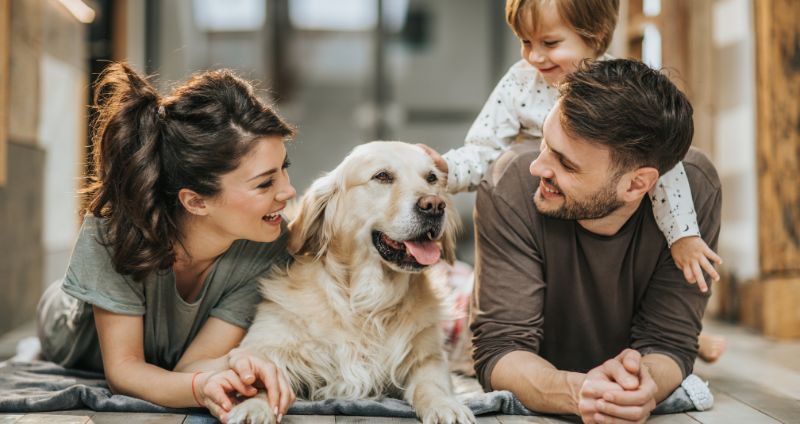Menu


It’s a published fact that 30-50% of all dogs and cats will perish due to cancer or cancer-related causes such as chemotherapy, according to the American Veterinary Medicine Association (1). It is also well known that early intervention in cancer patients has the highest success rates (2).
Having an at-home, affordable, and easily accessible method for early detection has not been an option until recently. Promisingly, there is now a way to test your dog for cancer at home with a convenient and accurate tool. This could be a game-changer for many pet parents and the longevity of their furry companions.
Certain cancers can take many years to grow enough to create physical symptoms. If that cancer can be detected early in its growth cycle it is much more susceptible to treatment.
Another known fact about treating cancer is that, as the tumor grows, it can become “too big to fail” so to speak. This occurs when there is more cancer than the immune system and supplements can manage. In these cases, we recommend a surgical debulking of the tumor, if possible, to reduce the total amount of cancerous tissue the body needs to eliminate (3).
What if we could have an easy test that could be performed at home that would accurately tell you if there is cancer growing silently in your fur baby? Such a test could be used yearly or twice yearly to detect cancer. A home-testing protocol would be especially helpful if you have a breed known to be a “cancer factory” such as the Labrador Retriever, Golden Retriever, Boxer, Bernese Mountain Dog, and many other breeds. Also, if your dog has had cancer in the past and you are worried about it returning this is a quick and easy screening test (4).
I am happy to announce that there is now an at-home cancer screening test for dogs, called Oncotect (5). It works on a cool principle. You’ve probably heard that dogs can detect people who have cancer by how they smell. This is true. Cancer produces “Volatile Organic Compounds” (VOC) which have a distinct aroma. Humans cannot smell these compounds, but dogs can! The canine acute sense of smell can detect these VOCs from cancer growth very early.
However, here’s where the story gets interesting. A worm type called nematode (C.elegans) is commonly used in research studies. This worm has a sense of smell 200 times stronger than that of a dog! As you can imagine, these worms can therefore easily detect VOCs.

The Oncotect test uses urine you collect from your dog and then send it to their lab.
The lab then uses nematodes to detect VOCs for cancer in your dog’s urine with an 80-90% accuracy rate. The lab has validated this test for 4 types of cancer. This means that they confirmed the type of canine cancer detected through the urine by microscopic examination of the dog’s tumor. When the examination shows the tumor to be cancerous, it proves that the early detection test works (6).
This test can be performed easily in your home by collecting your pet’s urine and then sending it to Oncotect for analysis. However, urine collection may not be as easy as it sounds.
To simplify collecting dog urine samples, I’ve used a tool I shaped from a metal clothes hanger. I first straighten out the hanger. Then, I shape one end into a handle and the other into a loop that can hold a little collection cup. Then when I walk my dog so it will urinate, I place the cup under the dog’s urine stream to collect it.
Female dogs are harder than male dogs since they squat. It may be trickier to collect a sample as they may not allow you enough space to place the cup under their vulva. In this case, you may need to hold the cup with your hand to place its opening into the urine stream.
If you are concerned about your pet developing cancer, then using the Oncotect easy in-home test once or twice a year can allay the fears you may have. It may also be the test that helps lead to an earlier diagnosis and, therefore, a better prognosis. If you do, by chance, detect cancer from your pet’s urine sample, then what a blessing! Now you can have a good head start in the successful treatment, and hopefully cure, of that potentially terminal diagnosis.
If you would like to try Oncotect’s home test, click the button below and use the code REALMUSHROOMS to save 15% off your order:
Disclaimer: The information or products mentioned in this article are provided as information resources only, and are not to be used or relied on to diagnose, treat, cure, or prevent any disease. This information does not create any patient-doctor relationship, and should not be used as a substitute for professional diagnosis and treatment. The information is intended for health care professionals only. The statements made in this article have not been evaluated by the Food and Drug Administration. Any products mentioned are not intended to diagnose, treat, cure, or prevent any disease. The information in this article is intended for educational purposes. The information is not intended to replace medical advice offered by licensed medical physicians. Please consult your doctor or health practitioner for any medical advice.